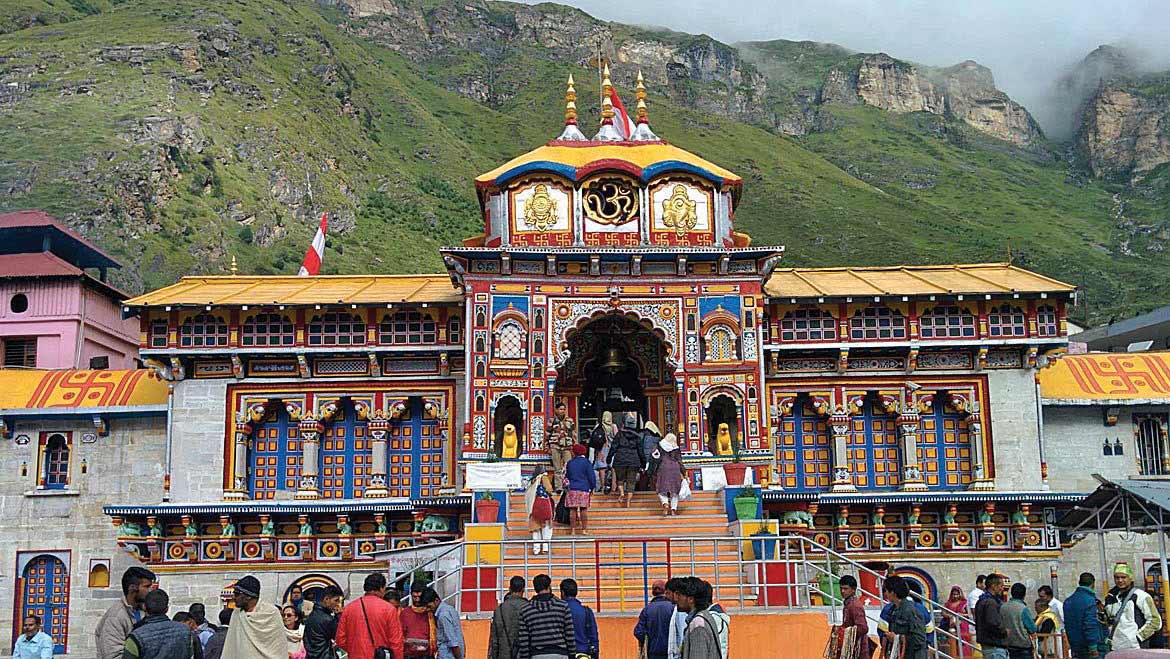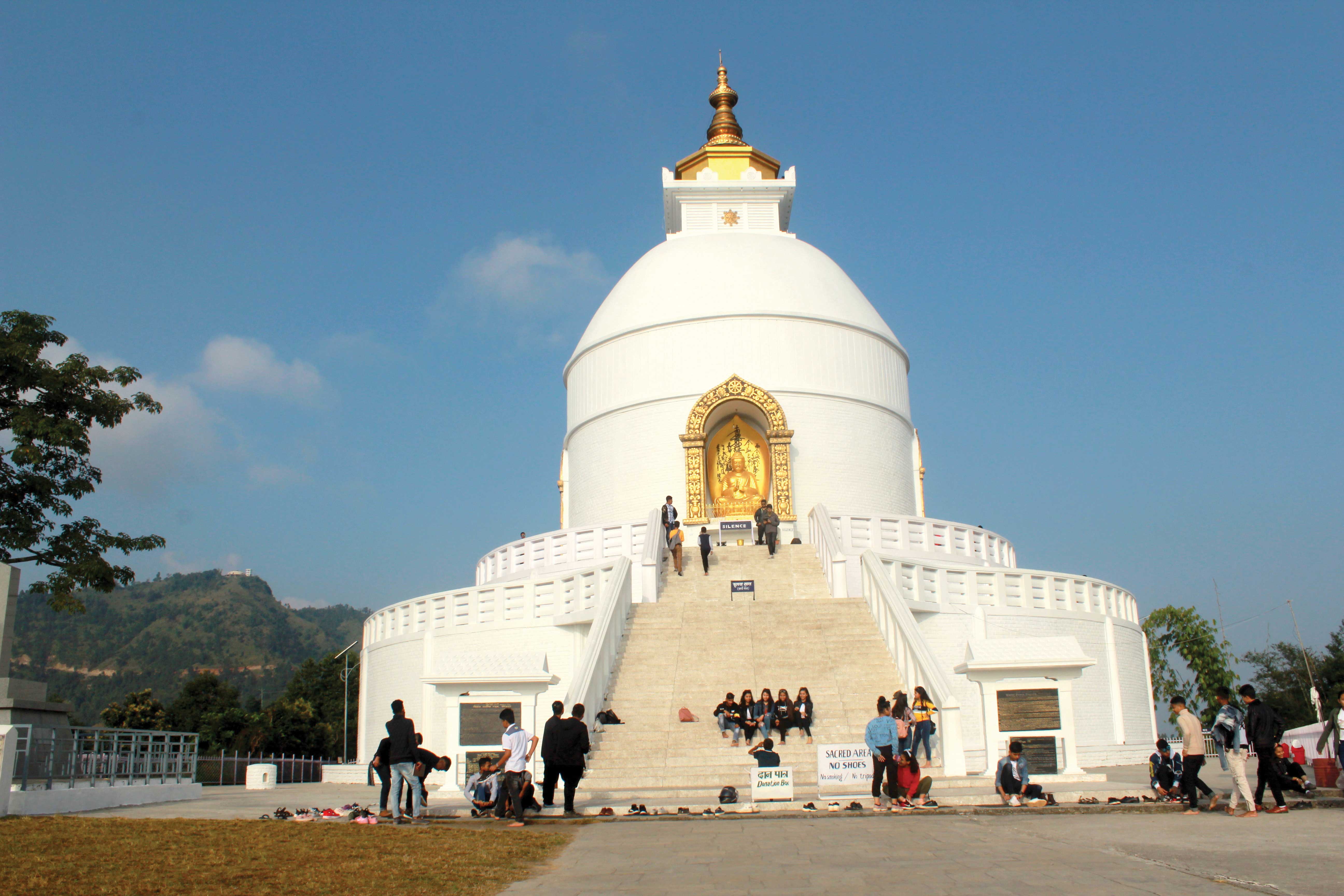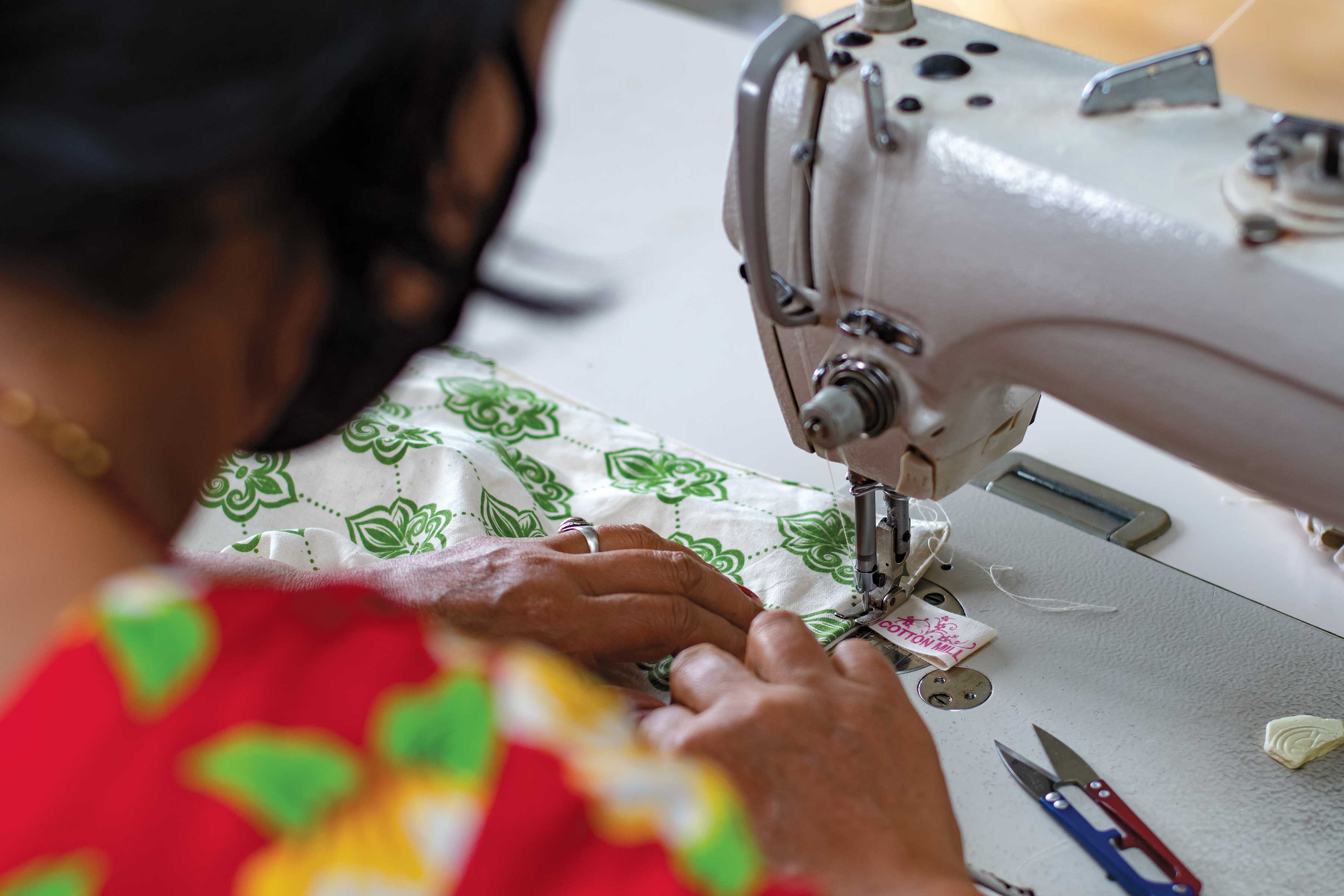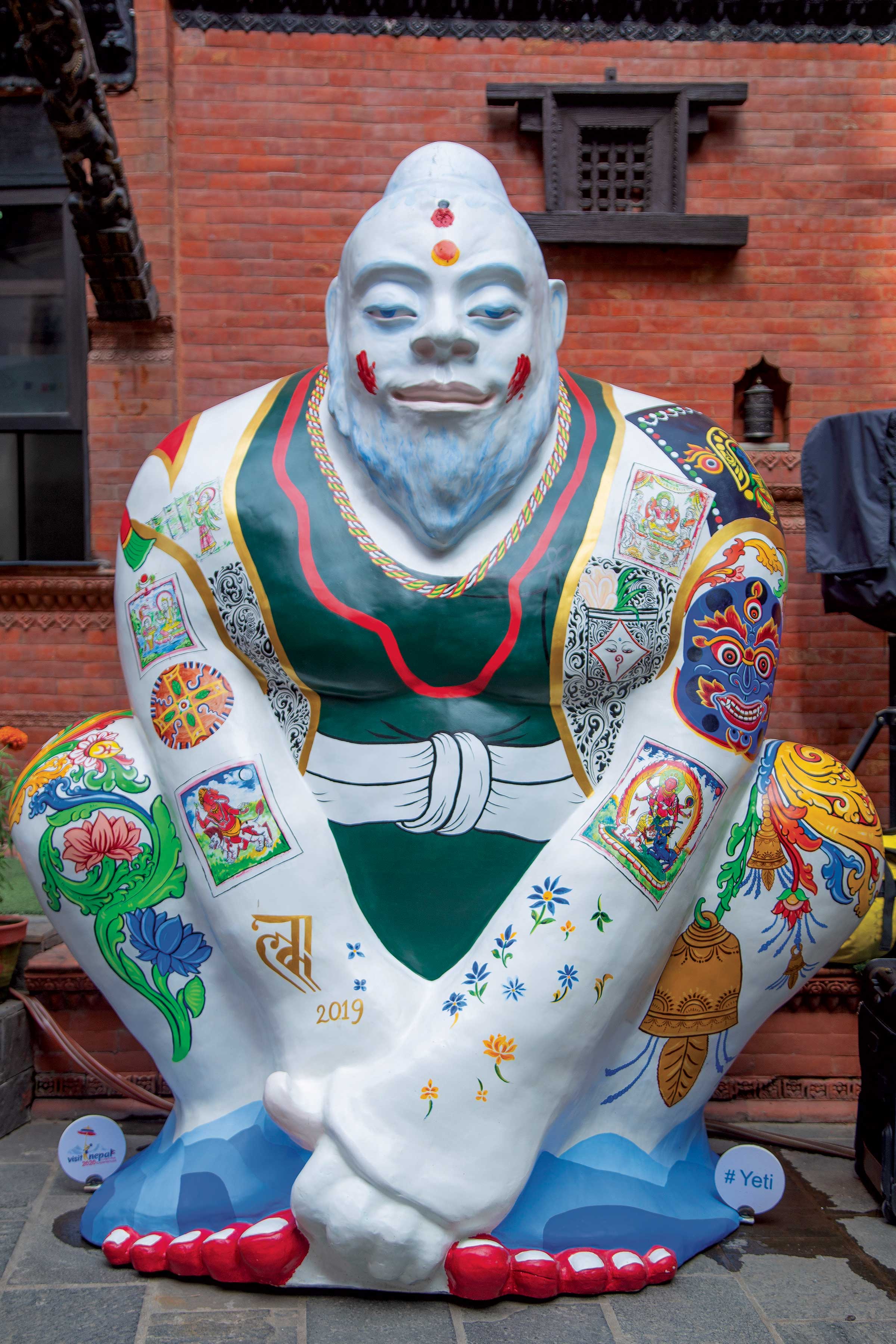
‘This is your home, and when at home, you are free to do whatever you want and go wherever you wish’
Tucked away on the hilltop of Astam Kot, 15 km northwest of the teeming touristy belt of Lakeside in Pokhara, lays a secret garden. To be exact, it is a farm; but not just any dingy, backwater farm, for it exudes a kind of rustic charm and provides comfort that far exceeds even that of a modern city hotel.
‘Kato-san, This is your home, and when at home, you are free to do whatever you want and go wherever you wish’. Those were the first words of welcome that Miss Arisa Kato heard when she arrived at Hana No Ie Agro-Resort. The 27-year-old Japanese tourist had just trekked for an hour-and-a-half to reach the resort recommended in a popular Japanese travel guidebook Arukikata. Ascending the final slopes up to the resort, Kato-san (-san, a polite suffix to one’s name) shrieked in delight at the sight of a most pleasant surprise.
Hana No Ie, which means the ‘House of Flowers’, is an agro-resort opened seven years ago that allows guests to experience the rural charm of Nepal with an emphasis on simplicity and tradition, through environmentally-friendly means. But, calling it a ‘resort’ is a misnomer. When guests arrive, they are encouraged to feel that this is neither a hotel nor a holiday accommodation. Firmly anchored in the beliefs of the resort’s staff is the mantra that, ‘Hana No Ie is Home’. Hence all guests, such as Miss Kato, are sincerely greeted just as in the Japanese custom of greeting and welcoming those who have returned home. But actions speak louder than words, and the staff does their utmost to provide first-class hospitality and service. A very attentive and well- mannered waiter is always at hand to serve every need of the guests. Simply put, this is like your own home with a top notch butler.
Hana No Ie is a unique getaway destination that has remained a well kept secret thus far. Nestled high on the hill, lying away from populated tourist areas and out of sight from the busy main road to Sarangkot, the agro-resort’s isolation adds a sense of exclusivity. Guests who stay at Hana No Ie get a feeling that they now belong to a select band of people who have been able to experience something special. There is a marked sense of uniqueness when guests find out that there is space for only 20 persons. A small number of guests maintains the serenity of the place, which is important to the tranquil setting of the agro-resort.
The founder of Hana No Ie, Mr Hiroshi Hidai, was trekking around the hill when he discovered this place. Acquiring four hectares of land at a cost of 60 million rupees, Mr Hidai roped in the expertise of the villagers of Astam Kot, commenced construction in 1997 and completed it in 2001. Incorporating elements of ecotourism into the agro-resort concept, Mr Hidai tries to minimize the negative impacts of tourism on the environment and the local people. There is absolutely no use of chemical pesticides in crop production on the resort farm. They use baking soda and bees’ wax as cleaning and polishing material. They also use bio-gas and organic waste material deposited into a compost heap as natural fertilizers. Besides being environmentally aware, the agro-resort is also concerned about the creation of economic opportunities for the local community. Villagers benefit from the resort’s daily operations with many of the staff coming from the community. Even the construction materials were obtained from the surrounding hillside.
Entering the mud-and-stone single-storey building, Kato-san sees not an unkempt interior but a tidy setting, adorned with unassuming furnishings. Reflecting the agro-resort’s focus on simplicity, the reception area is stylishly minimalist without any unnecessary ostentatious fittings. Just like almost everything else in the resort complex, the furniture is made by environmentally-conscious methods, crafted from stone or wood.
Just as she finishes her piping hot cup of fragrant herbal tea, made from herbs gathered on the farm, Kato-san is handed her room keys. “No need signature to check-in?” she asked. The amiable staff member merely smiled as he picked up her luggage and led the way to her cottage. Certainly, ‘just like home’, there is no need to sign in.
Hana No Ie has five charming rustic cottages each with two spacious rooms. Each double occupying room is outfitted with minimalist yet tasteful décor with attentive touches that follow Japanese customs low Japanese-style tables and chairs as well as slippers at the entrance, very much like a typical Japanese home. All the cottages have fabulous panoramic views of the surrounding areas. At the break of dawn, guests wake up to the majestic sight of the Annapurna mountain range, including the impressive snow capped peak of Machhapuchhre. At dusk, they can see the setting sun’s golden rays glisten off the shimmering paddy fields and waterways of the Gachok-Khachok Valley.
Kato-san was looking for an opportunity to indulge in gardening, for there is nothing as such in the big city of Tokyo. Agrotourism is vacationing on farms, where guests can walk around the farm, pick their own fresh produce and have the chef prepare it for their meals. Guests who visit the agro-resort often have not seen live farm animals before and many, like Kato-san, cannot discern between a cow and buffalo. Kato-san, who has not seen such farming practices before, was fully engaged in capturing videos of her activities in the resort as well as meticulously taking down notes. Her curiosity was evident in the constant exclamations of “Ehs” and “Ooohs” as she explored the stepped terraces of the farm; the myriad vegetables and fruits were an unending source of astonishment. The selection ranges from ordinary vegetables such as ginger, lettuce and radish, to the exotic, such as Japanese cabbage, pumpkin, Japanese onions, sweet potatoes and asparagus. Herbs like rosemary, oregano, lemongrass and citronella are also grown and used for making aromatic beverages.
“Ichigo!”, Kato-san called out in excitement, as she identified her favorite fruit, the strawberry. Hana No Ie also has a wide range of seasonal fruits like peach, kiwi, pear, guava and blackberries. These are then made into fruit juices for the guests. But beyond her gardening fantasies, she also got to see, first-hand, the honey-collection and milking process as well as trying her hand in making butter.
Guests also get to visit the adjacent village and join in the villagers’ activities. A main attraction is the school, situated at the highest point of the hill. The wide-eyed looks and cheeky grins of the school children brought a warm smile to Kato-san’s face. “They are so friendly and their genuine smiles upon seeing me, make me feel very welcome”.
Returning ‘home’ from her adventure in the village, Kato-san got to rest her tired feet, soaking in the goemon buro (Japanese style wooden-bath), with the hot water soothing her aching muscles. After her invigorating bath, she savored a delectable Japanese meal of tempura and yakitori whipped up by the resort manager-cum-chef, Dhir Bahadur Gurung, who spent three months in Japan honing his culinary skills. She felt very much like she had returned back to Japan, with the Japanese speaking environment, familiar Japanese settings, Japanese food and flowers such as Sakura and ume boshi (Japanese plum).
As testament to the outstanding hospitality that guests have enjoyed at the resort, the guestbook is filled with complimentary messages, thanking the resort staff for their tremendous stay. Adding to the long list of praises is the satisfied Miss Ariso Kato, who despite her packed travel schedule, felt that it was all worth the rush to stay in such a convivial and natural surrounding.
The best times to visit the Hana No Ie Agro-Resort is from March to May or September to December. Those are the times when most of the fruits and vegetables bloom and bear fruit in their vibrant glory. During these peak periods, sake (Japanese rice wine) is specially brought in from Japan for guests. On the other hand, there is no reason why one should not stay in the resort during the winter months. In the evening, as the cold and dark sets in, guests huddle in the warmth and light of the fireplace in the reception building, sipping Newari aila while awaiting their dinner.
For each stay, all three meals are catered and transportation is provided from the Pokhara office near Lakeside to the base of the hill. From then on it is a one-and-half hour gentle trek up to the resort. A jeep or taxi can also be hired to make the trip, but the road is bumpy. The management can arrange for special requests, such as food preferences or additional accommodation requirements, at no extra costs. Just enquire at the time of booking.
‘Wind in Nepal’ is the corporate office of the agro-resort and they also have a Japanese restaurant and sauna located in Lakeside, Pokhara, serving authentic soba and udon (Japanese noodles).
Guests can make room bookings at Hana No Ie Agro-Resort through Wind-In-Nepal’s Kathmandu or Pokhara offices. Kathmandu Manager: Nirmal Shrestha, 01-426.8219; Pokhara Manager/Guide: Durga Datta Adhikari: 01-424.9133
Gokarna Forest Resort The Royal Hunting Ground
As you drive along the winding roads that lead you to the gates to Gokarna Forest Resort, its hard to...









